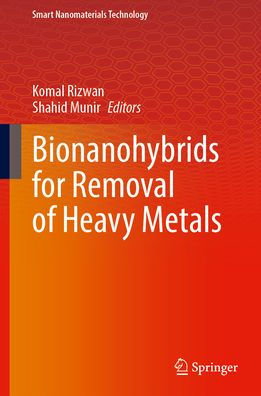Biopolymeric nanocomposites possess high surface area, more porous structure, high reactivity and less water solubility, giving it a great adsorption capacity towards heavy metals. Biopolymeric materials are also abundant, low cost, biodegradable and possess different functional moieties (carboxyl, amine, hydroxyl and carbonyl) which play role to adsorb metal ions through various interactions such as electrostatic, hydrogen bonding, ion exchange and chelation. In that light, this book covers various biopolymer based nanohybrids such as cellulose, gelatin, chitin and chitosan, lignin, pectin, alginate, dextran and carrageenan, starch and guar-gum, silk, collagen and keratin; and their properties, mechanism and efficiency in removing heavy metal pollutants from industrial wastewater. The book also highlights the challenges and limitations of this technology which is interesting to early researchers, academics and industrial practitioners who interested in the bioremediation of heavy metal pollutants present in the environment due to rapid industrialization and urbanization.
Biopolymeric nanocomposites possess high surface area, more porous structure, high reactivity and less water solubility, giving it a great adsorption capacity towards heavy metals. Biopolymeric materials are also abundant, low cost, biodegradable and possess different functional moieties (carboxyl, amine, hydroxyl and carbonyl) which play role to adsorb metal ions through various interactions such as electrostatic, hydrogen bonding, ion exchange and chelation. In that light, this book covers various biopolymer based nanohybrids such as cellulose, gelatin, chitin and chitosan, lignin, pectin, alginate, dextran and carrageenan, starch and guar-gum, silk, collagen and keratin; and their properties, mechanism and efficiency in removing heavy metal pollutants from industrial wastewater. The book also highlights the challenges and limitations of this technology which is interesting to early researchers, academics and industrial practitioners who interested in the bioremediation of heavy metal pollutants present in the environment due to rapid industrialization and urbanization.

Bionanohybrids for Removal of Heavy Metals
418
Bionanohybrids for Removal of Heavy Metals
418Hardcover

Product Details
| ISBN-13: | 9789819664207 |
|---|---|
| Publisher: | Springer Nature Singapore |
| Publication date: | 09/22/2025 |
| Series: | Smart Nanomaterials Technology |
| Pages: | 418 |
| Product dimensions: | 6.10(w) x 9.25(h) x (d) |
